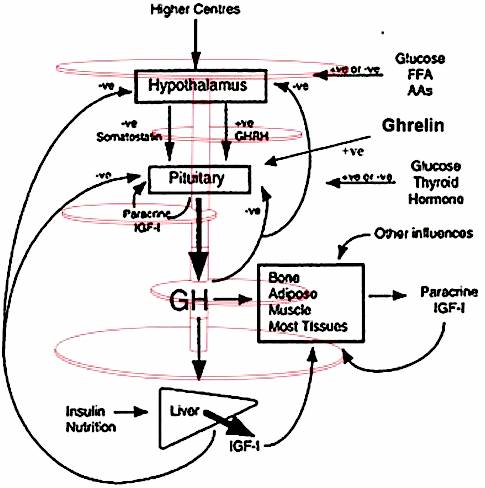HPS Axis Pirouette
March 15, 2018
To soften the pressure of the increasingly dominant genetic profiles for greater human height, humanity at some point may opt to interfere in the cell signaling pathways that induce growth. One such pathway, the hypothalamic–pituitary axis, includes the secretion of growth hormone (GH) into the circulation and the subsequent stimulation of insulin-like growth factor 1 (IGF-1) production by GH in tissues such as the liver. The HPS Axis also controls the secretion of other hypothalamic–pituitary hormones involved in the control of GH secretion from the pituitary gland such as somatocrinin (GHRH), somatostatin (GHIH), and ghrelin (GHS). Individuals with growth hormone deficiency or GHR insensitivity have short stature and in some cases, such as in the case of the Laron People, are protected from cancer. Conversely, acromegaly and gigantism are conditions of GH and IGF-1 excess and are characterized by overgrowth and tall stature. The physiological mechanisms responsible for the periodicity in the secretion of growth hormone are believed to involve a dual system of stimulatory or inhibitory inputs of hypothamalic origin. Tweaking the choreography between these two may ultimately lead to an understanding of healthy growth, and where growth turns malignant.